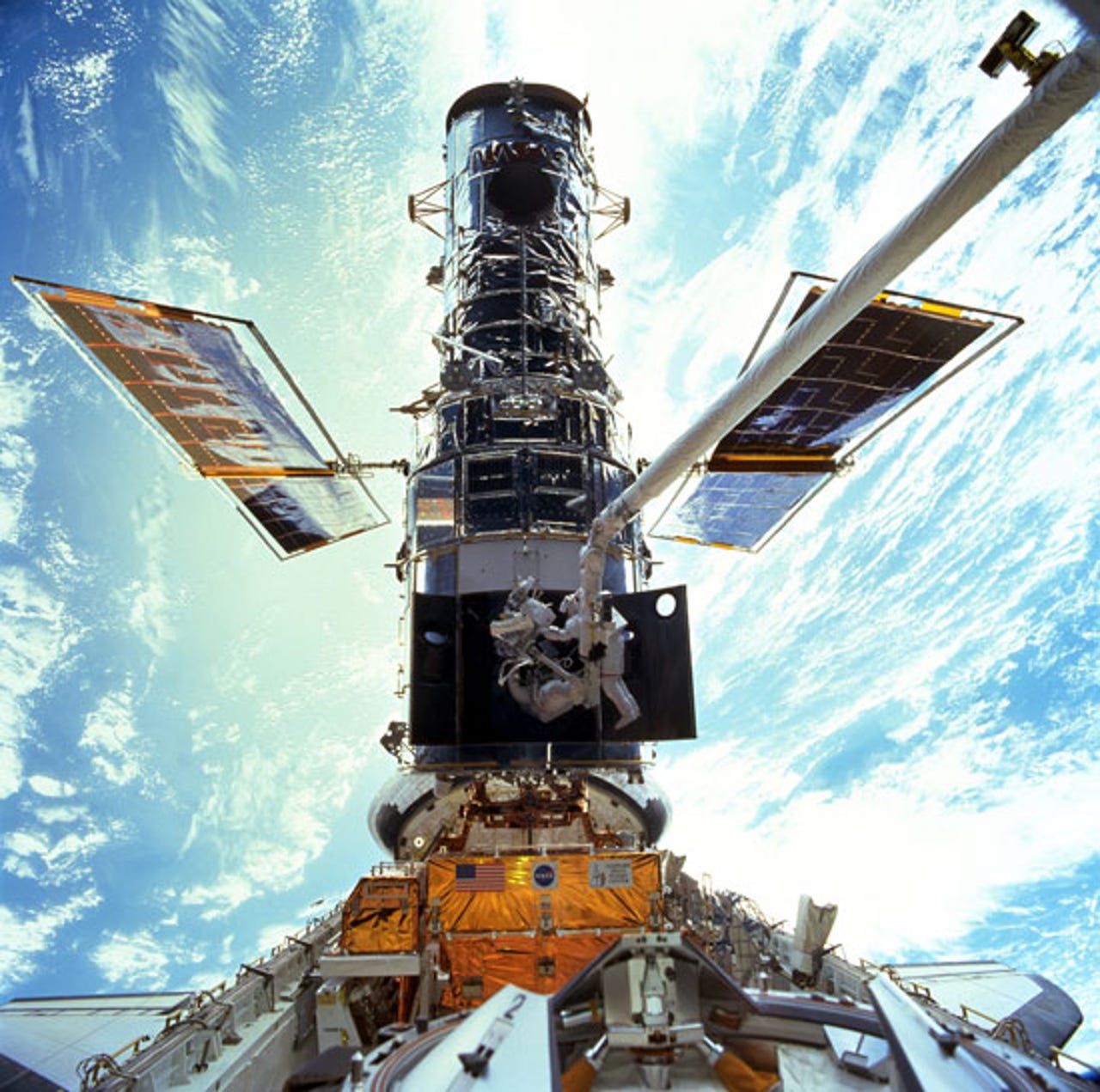Gallery: Hubble's greatest hits - 20th anniversary


Here are some of greatest discoveries and spectacular images from the orbiting space observatory which is about the size of a school bus.
Credit: NASA
NASA describes the image: "The image captures the top of a three-light-year-tall pillar of gas and dust that is being eaten away by the brilliant light from nearby bright stars. The pillar is also being pushed apart from within, as infant stars buried inside it fire off jets of gas that can be seen streaming from towering peaks like arrows sailing through the air."
Credit: NASA, ESA, and M. Livio and the Hubble 20th Anniversary Team (STScI)
Credit: NASA, ESA, and M. Livio (STScI)
Credit: Jeffrey Newman (UC Berkeley) and NASA)
1997 images from Hubble showed that three different galaxies contained black holes helping scientists to theorize that nearly all galaxies contained black holes.Credit: Karl Gebhardt (University of Michigan), Tod Lauer (NOAO), and NASA
Credit: NASA
Credit: NASA/ESA/G. Bacon (STScI)
Credit: NASA and A. Reiss
Credit: NASA
Credit: NASA
This image is a composite of images taken from the Hubble Space Telescope, Chandra X-Ray Observatory and Spitzer Space Telescope. X-ray data recorded by Chandra appears in blue, infrared light recorded by Spitzer appears in red, and Hubble's observation of hydrogen emission appears in orange.
Credit: NASA
Messier 82 - where stars are born.
Credit: NASA
Credit: NASA
Credit: NASA
Credit: NASA
Credit: NASA
Credit: NASA, ESA, and J. Madrid (McMaster University)
The planet, Fomalhaut b, maintains an orbit around the star Fomalhaut and has three times the mass of Jupiter.
Credit: NASA
Credit: NASA
On July 4-5, 2005, Hubble recorded the impact of a projectile that was launched by the spacecraft Deep Impact on a comet.
Credit: NASA, ESA, and the Hubble Heritage Team (STScI/AURA)
Credit: NASA
The Great Red Spot is a storm that's wider than two Earths and has been spotted on Jupiter for at least 168 years and most likely longer. Red Spot Jr. turned red in early 2006.
Credit: NASA
Credit: NASA
It's just a few pixels wide but it's one of the few we have of the former planet, now dwarf planet, Pluto.
Credit: NASA
Credit: NASA
Credit: NASA
Credit: NASA, ESA, G. Illingworth (UCO/Lick Observatory and the University of California, Santa Cruz), R. Bouwens (UCO/Lick Observatory and Leiden University), and the HUDF09 Team.